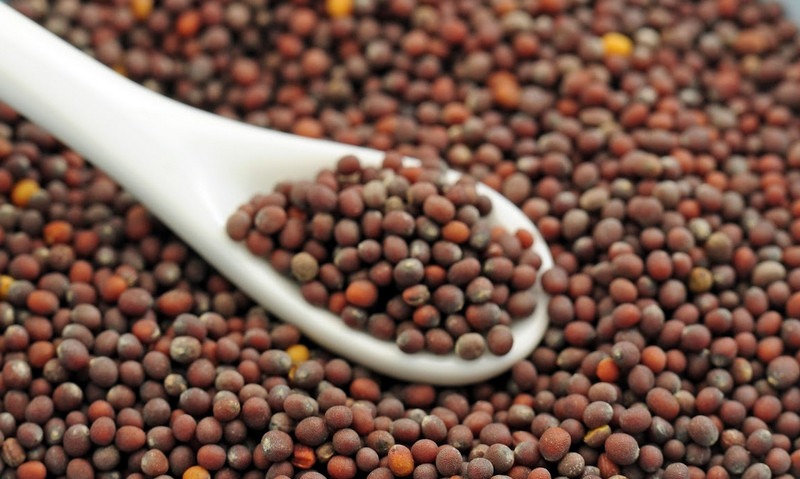Corn dogs will never taste like it without the mustard. Mustard is a popular condiment in various dishes especially snacks like burgers, hotdogs, and sandwiches. It is one of the staples and believed to be a classic for Americans.
If you are not familiar with mustard sauce, it is a thick yellow paste often used as dip or in stir fry. It is considered a table condiment on meat and vegetables. It can also be added in vinaigrettes and mayonnaise.
You might have a bottle of mustard at home or some mustard leftover after an occasion. Some would just discard the leftover not knowing how to store it properly. You do not want to waste that golden sauce so here is our tips on how you can store it.
So, can you keep mustard frozen and for how long? You can refrigerate mustard for a month or two. If you want it to last for more than two months, it is best to store it in your freezer and you can have it anytime you want.
We provided you with the easy steps and helpful tips in storing and freezing mustard.
A Mustard Storage Guide
If you have a habit of using mustard like twice or more a week, then you can simply have it refrigerated. As long as it is kept in a bottle or container with cover, refrigerating it will be fine until it is totally consumed. However, if you are not sure when will be the next time you will want to use it or add it to your dish, it would be best to keep it frozen.
Here is a list of some common uses of mustard you may want to try.
- Deviled eggs
- Potato salad
- Sandwich filling
- Tuna salad
- Hot dogs and corn dogs
- Dipping sauce
- Mustard greens
- Salad dressing
- Marinade mix
Mustard can be used in many types of dishes and if you cannot be creative on a dish, you can always check some recipe.
Mustard does not only make your dish flavorful, but it also has many health benefits. Studies showed that eating mustard can help speed up our body’s metabolism, lower high blood pressure, aids in digestion, inhibits the growth of cancer cells, and helps reduce the severity of asthma.
How Mustard is Made
You can buy mustard from any grocery or supermarket, but it is also easy to make it at home. We will share with you the classic mustard recipe and the simple steps to make homemade mustard. Know that commercially manufactured mustard are prepared differently so the homemade mustard may taste a bit different.
Here are the simple steps:
- Prepare dry or ground mustard, turmeric, paprika, garlic, salt, distilled vinegar (preferably white) and water.
- Combine these ingredients in a deep pan or pot and whisk it thoroughly until it becomes smooth.
- Cook for 45 minutes at medium heat and stir frequently until it turns into a thick paste. Cooking this gives unpleasant odor that can be unbearable to some so you may need to open the windows or run a fan.
- Add vinegar and keep stirring for 10 minutes until it turned to your desired consistency.
- Leave it at room temperature to cool before preparing it for storage.
It is actually a simple process, but you need to monitor it while being cooked and keep stirring to get the consistency of a paste.
If it has cooled down, you can now bottle it or place it in a tightly sealed food container with lid for storage.
Storing Mustard – Refrigerator or Freezer
The method of storing your mustard depends on how often you intend to use it. Refrigerating mustard is best if you regularly need mustard on your dish. Freezing mustard is best if you intend to store it for more than a month and you do not have plans on using it anytime sooner.
Storing Mustard in the Refrigerator
If you purchased mustard from the grocery store and it has not been opened yet, it can be kept at room temperature or quite some time. The label of the mustard also tells you what to do after it has been opened or to refrigerate it.
If you have opened it, keeping it at room temperature can preserve it for a month or two but it has to be sealed tightly. It can be preserved for about a year if you keep it refrigerated.
Most condiments need to be shaken after being store for some time as the water may settle on the top of the mixture, and it is the same with mustard. You need to shake it a bit every time you will use it.
Storing Mustard in the Freezer
If you do not know when you might be using mustard, but you want it available at home for when you actually need it, freezing is your best option. Mustard can be preserved for up to a year when frozen. Always check the label of your purchased mustard for its remaining shelf-life to also be sure of its quality before freezing it.
It is not recommended to freeze mustard in a bottle since you will need to thaw it entirely before you can use it. The easy method is to empty the mustard bottle and place its content in an ice cube tray. Freezing it into portions in an ice cube tray will give you single serving of mustard and you will not have to thaw all of it.
Follow these easy steps on how to freeze mustard.
- Fill each slot in the ice cube tray with mustard.
- Freeze it for 1 to 3 days or until you can pop the frozen mustard from the ice tray individually.
- Keep it stored and frozen in the ice tray and just pop a serving when you need it.
- Pop the frozen mustard from the ice tray and place it in a food container of resealable freezer bag before putting it back in the freezer. This is another option if you do not want to leave it in the ice tray.
- Keep mustard in the freezer for one year to 16 months.
You need to thaw frozen mustard before you can use it. The quickest way is to place it in a microwave safe dish and microwave it for a minute. The downside of microwaving is it can be a bit watery, so you need to stir it until you get the right consistency. It may also affect or change its taste.
The simple way of thawing frozen mustard is to take it out of the freezer and leave it inside the fridge overnight or leave it sitting at room temperature until it has completely thawed. Another recommended method to place the cube of frozen mustard into a container and let that container sit on warm water until it has completely thawed.
If you have frozen them in individual servings, it will always be easier and faster to thaw each serving or portions of frozen mustard than thawing an entire lot every time you need it.

Related Questions
What are the health benefits of mustard?
Mustard are made from finely ground dry mustard which is cooked with other seasonings to make it into a thick paste. Even as a paste or condiment it has inherent nutritive value of mustard. Mustard contains different vitamins and minerals we can benefit from like Magnesium, Iron, Zinc, Calcium, Manganese, Niacin and Phosphorus. It also rich in fiber and protein.
When can mustard be bad for health?
Mustard contains nutritive value that is good for us, but some people may be allergic to it. It is best to know if you have allergies related to mustard before eating or adding it to your dish since allergies can cause mild to severe health problem.
You can also moderate the intake of this condiment since anything that is too much may cause health related problems.
How can you tell when mustard turned bad?
You can smell and look at the consistency of the mustard to know if it has turned bad. When mustard is spoiled it usually gives really rancid or bad odor, becomes discolored or you can see molds.


